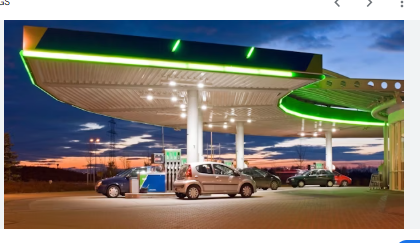Fuel Stations look simple from the outside—pumps, canopies, and maybe a small shop. Beneath the simple look, the building process is very regulated and complex.
A bad station design causes quick issues. You get traffic jams, safety risks, and leaks that hurt the environment. Well-planned gas station construction leads to safety, efficiency, and profits for many years.

Planning Before Breaking Ground
Successful projects don’t start with shovels—they start with careful planning. A construction company evaluates:
-
Site feasibility – zoning laws, traffic flow, and proximity to utilities.
-
Environmental assessments – soil and groundwater testing to prevent contamination.
-
Community concerns – noise, lighting, and local traffic impacts.
-
Regulatory requirements – permits from local, state, and federal agencies.
These steps prevent costly redesigns or delays down the line. Skipping the planning stage is one of the fastest ways for a project to fail.
Core Infrastructure That Lasts
The heart of a fuel station is its infrastructure. Each component must be durable, compliant, and easy to maintain.
-
Storage tanks – installed with double walls and secondary containment to reduce leak risks.
-
Pipelines and pumps – designed for the efficient and safe delivery of fuel.
-
Electrical systems – powering everything from pump motors to LED lighting and digital signage.
-
Stormwater management – drainage solutions that prevent runoff contamination.
-
Fire safety systems – emergency shutoffs, sprinklers, and suppression technologies.
These systems use high-quality materials and expert engineering. Designers create them to last for decades.

Designing for the Customer Experience
A station isn’t about infrastructure—it’s about people. Customers expect safety, convenience, and comfort. That’s why modern gas station construction emphasizes:
-
Smooth traffic flow reduces congestion.
-
Wide fueling lanes to accommodate larger vehicles.
-
Well-lit canopies that provide visibility at night.
-
Convenience stores and rest areas that encourage repeat visits.
-
Landscaping and design features that integrate the station into its community.
These design choices make stations not only functional but also inviting.
Compliance at Every Step
Are among the most regulated facilities in the country. Every element, from storage tank depth to canopy height, must meet codes. Compliance covers:
-
Fire protection standards.
-
Environmental regulations for storage and spill prevention.
-
Accessibility requirements under the ADA law.
-
Safety inspections before opening day.
A construction company that builds gas stations helps owners avoid fines, delays, and liability problems.
Sustainability and Environmental Care
The best stations today are designed with environmental responsibility in mind. Innovations include:
-
Double-walled tanks to prevent leaks.
-
Spill containment basins for accidental overflows.
-
Stormwater filtration systems to protect waterways.
-
LED lighting and energy-efficient materials to reduce the carbon footprint.
These measures protect communities and build goodwill with regulators and customers.
Managing Costs and Timelines
Gas stations are capital-intensive projects, but experienced builders help owners control costs. This involves:
-
Transparent budgeting before construction begins.
-
Coordinated scheduling of subcontractors.
-
Efficient supply chain management for tanks, pumps, and electrical systems.
-
Contingency planning to handle weather or permit delays.
Managing costs and timelines is as important as technical design for long-term profit.
Real-World Example: A Community Station Built to Last
A suburban community approved a new gas station after thorough planning. Designers included wide fueling lanes, stormwater systems, and eco-friendly lighting. Construction crews coordinated every step, from excavation to final inspection. The result was a station that fit right into the neighborhood. It soon became a trusted stop for commuters.
This example shows how strong design principles translate into lasting value.
Preparing for the Future
The fuel industry is changing. Electric charging stations and renewable fuels are now common. Smart gas station construction anticipates these changes by:
-
Designing flexible infrastructure that can accommodate new technologies.
-
Leaving room for future expansion or upgrades.
-
We can incorporate modular systems that adapt without tearing everything down.
Future-proofing ensures today’s stations remain relevant tomorrow.
Long-Term Value of Thoughtful Design
When designers and builders focus on a station, the benefits last long after opening day. Owners enjoy lower maintenance costs, fewer compliance issues, and greater customer loyalty. Communities enjoy safer, cleaner, and more reliable fuel access.
Thoughtful gas station construction isn’t for refueling. It’s about creating lasting infrastructure.
